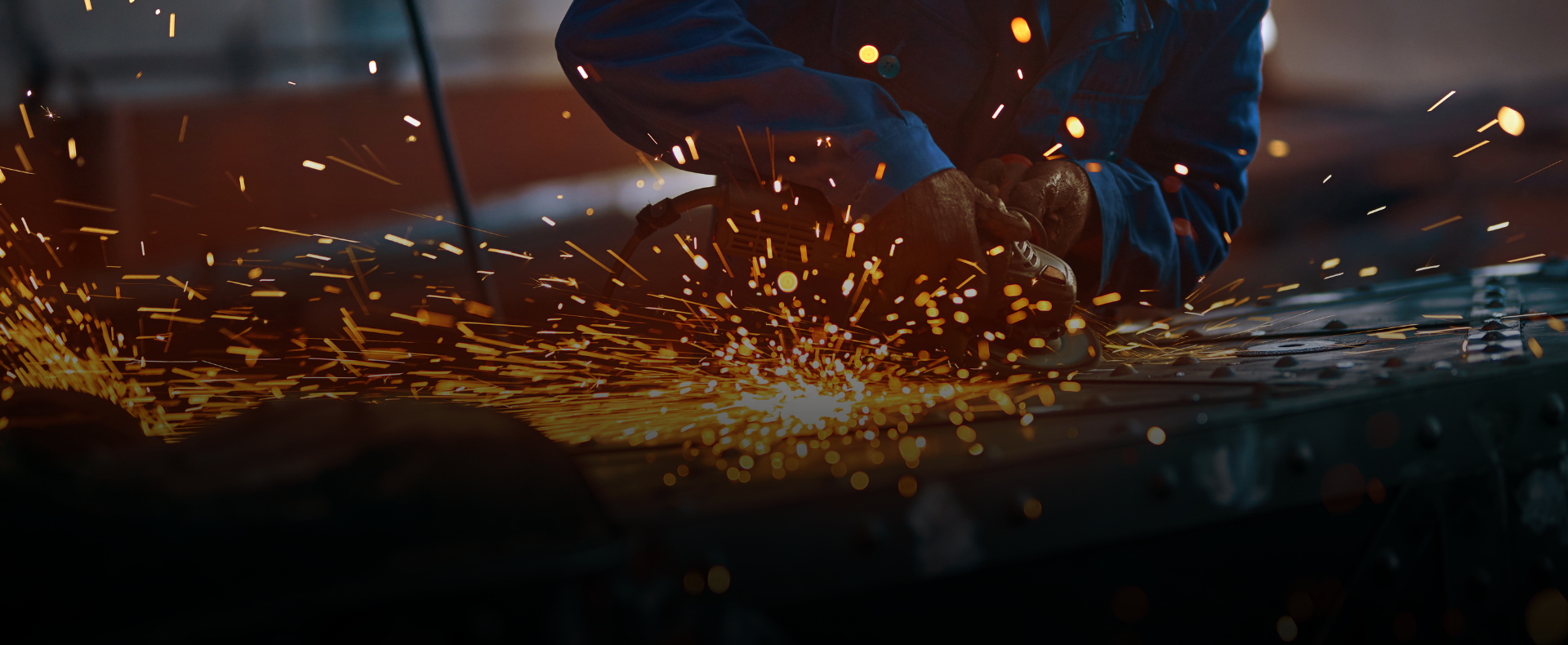Behind every strong structure is a smarter fabrication process.
Whether you’re designing an overpass, a wind turbine base, or an industrial conveyor system, high-load infrastructure demands more than just strong design, it needs precision fabrication to match.
At Gaja Engineering, we’ve supported infrastructure builds across South Australia, from mining frameworks to energy structures, and one thing remains true: better fabrication equals longer-lasting performance.
This guide is crafted to help engineers, project managers, and construction professionals who want to make informed choices about structural fabrication for demanding applications.
The Real Importance of Material Selection
Designing for load-bearing performance begins with choosing the right steel grade, but strength alone won’t guarantee long-term success. While high-tensile steels like AS/NZS 3679 Grade 300 or Grade 350 are standard in infrastructure projects, additional factors like ductility, weldability, corrosion resistance, and fatigue performance need serious consideration.
Ductility is particularly important in areas where seismic performance is critical or where dynamic loads are expected. Weldability ensures that the heat-affected zones don’t compromise the structure during fabrication. And corrosion resistance is non-negotiable for any structure exposed to the elements whether you choose galvanised coatings or weathering steels like Corten. Equally, fatigue resistance matters in structures subjected to repeated or cyclical stress, like traffic bridges or mining conveyors.
Work closely with your fabricator to align availability, mechanical properties, and compliance with local building codes and always request mill test certificates to ensure steel authenticity.

Why Precision Fabrication Matters More Than Ever
Even the most meticulously engineered design can fall apart if fabrication quality is inconsistent. In infrastructure, precision isn’t a luxury, it’s structural insurance.
When your components are off by even a few millimetres, you invite risks like load misdistribution, joint fatigue, and misalignment that can spiral into safety hazards or costly on-site adjustments. This is especially problematic for components that must work in tandem beams with gussets, flanges with pins, or baseplates with pre-set anchor bolts.
At Gaja Engineering, we prioritise dimensional accuracy and repeatability using CNC-controlled plasma cutting systems, jig-based assemblies, and in-process inspections. Our tolerances are guided by Australian Standard AS4100 and ISO 9013 essential for heavy builds like power plant structures and mining platforms. Because when the structure has to perform under stress, you want zero surprises during fitment.
The Value of Design for Fabrication (DFF)
One of the most underused strategies in infrastructure is early engagement between the engineering and fabrication teams, a practice often referred to as Design for Fabrication, or DFF.
When the fabrication process informs design choices early, projects benefit from simplified welds, easier transport logistics, and faster on-site assembly. For instance, by simplifying joints or standardising repeated components, you reduce the chances of material waste and fitment issues. Similarly, accounting for access and lifting during the design stage can lead to smarter decisions around modular construction or the inclusion of lifting lugs.
At Gaja, we frequently collaborate with civil and structural engineers during the tender and detailing phases to ensure designs can be fabricated cost-effectively without compromising on integrity. Smart design isn’t about lowering ambitions, it’s about making execution smoother and safer under real-world constraints.
Why Certifications and QA Are Mission-Critical
In infrastructure projects especially high-load builds documentation is as important as the fabrication itself. It’s not enough for the welds to look good; they must be traceable and compliant with relevant standards. Without proper records, regulators or consulting engineers can delay or reject your structure, even if it’s been built to spec.
Ensure your fabrication partner can supply complete quality documentation. This includes mill test certificates (MTCs) confirming steel origin and grade, welder qualifications in accordance with AS/NZS 1554, inspection reports, and an auditable quality management system like ISO 9001. Non-destructive testing (NDT) methods like ultrasonic or magnetic particle inspections are standard for critical welds and load-bearing components.
At Gaja Engineering, we’ve built our reputation on transparency and traceability. Every project we fabricate is backed by a full QA pack no guesswork, no gaps.
Sustainability in Structural Fabrication
Sustainability is becoming a key focus across infrastructure tenders and fabrication plays a bigger role than many realise.
Choosing steel from low-carbon producers, using solar-powered fabrication facilities, and minimising waste during cutting and welding all contribute to a project’s environmental credentials. Modular prefabrication can further reduce onsite emissions, crane time, and labour hours making the entire build cleaner and more efficient.
At Gaja, we’ve integrated responsible practices across our workshop, from offcut recycling and VOC-compliant paint systems to energy-efficient cutting tools and waste segregation. It’s about more than ticking compliance boxes, it’s about building smarter and greener without compromising strength.
Final Thoughts: Engineering Doesn’t End at the Drawing Board
If you’re working on a high-load structure, fabrication is where your design becomes reality. Precision, compliance, and collaboration are key. The earlier your fabricator enters the picture, the smoother your project will run.
Our commitment to quality and precision isn’t just theory, it’s recognised in the field. The University of Adelaide’s School of Animal and Veterinary Sciences recently partnered with Gaja Engineering to install specialised poultry cage systems at their Roseworthy research facility.
Backed by a Group Built on Strength: Gaja Engineering & Hardchrome Services
Gaja Engineering is proud to operate alongside Hardchrome Services, our sister company specialising in cylinder repair, precision surface finishing, and industrial hard chroming.
Together, we provide a full-spectrum solution from metal fabrication and machining to hydraulic component restoration and protective surface treatments. This group synergy enables us to offer deeper expertise, faster turnaround times, and true end-to-end service across sectors including mining, manufacturing, infrastructure, and research.
If your project demands both structural performance and component longevity, we can deliver under one roof.
Connect with Gaja Engineering today
From blueprint to shop floor, we deliver engineering excellence you can trust.
Frequently Asked Questions (FAQ)
What steel grade is best for high-load frames in coastal areas?
In coastal or corrosive environments, we recommend hot-dip galvanised Grade 350 or Corten A weathering steel. Each offers long-term corrosion resistance, though the choice depends on your aesthetic and maintenance expectations.
How do I know if a fabricator is compliant with structural codes?
Always ask for documentation. A reliable partner will be able to show you their AS/NZS 1554 weld certifications, ISO 9001 quality accreditation, traceable steel certificates, and previous experience with similar infrastructure-scale work.
Can I visit the workshop during fabrication?
Absolutely. We welcome walk-throughs at all project stages. It gives clients confidence, allows them to catch design-fabrication misalignments early, and ensures everyone is on the same page before site delivery.
What kind of lead times should I expect?
Typical lead times vary based on complexity. Smaller custom components may take 2 to 3 weeks, while larger structural frames often require 6 to 10 weeks. Material availability and client approvals also influence timelines so we always recommend early booking.
How can I request a quote or start a project with Gaja Engineering?
You can reach out directly via our Contact Page or call our team to discuss your project scope. We’ll provide a tailored proposal with timelines, materials, and process recommendations, no obligation required.




